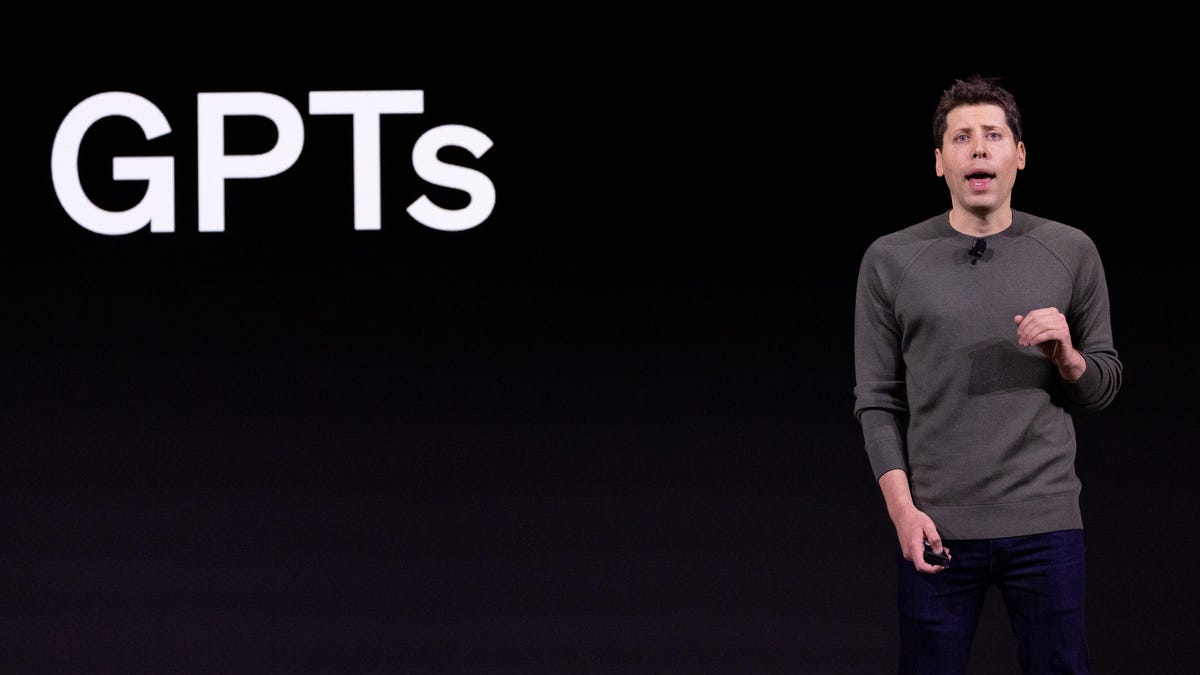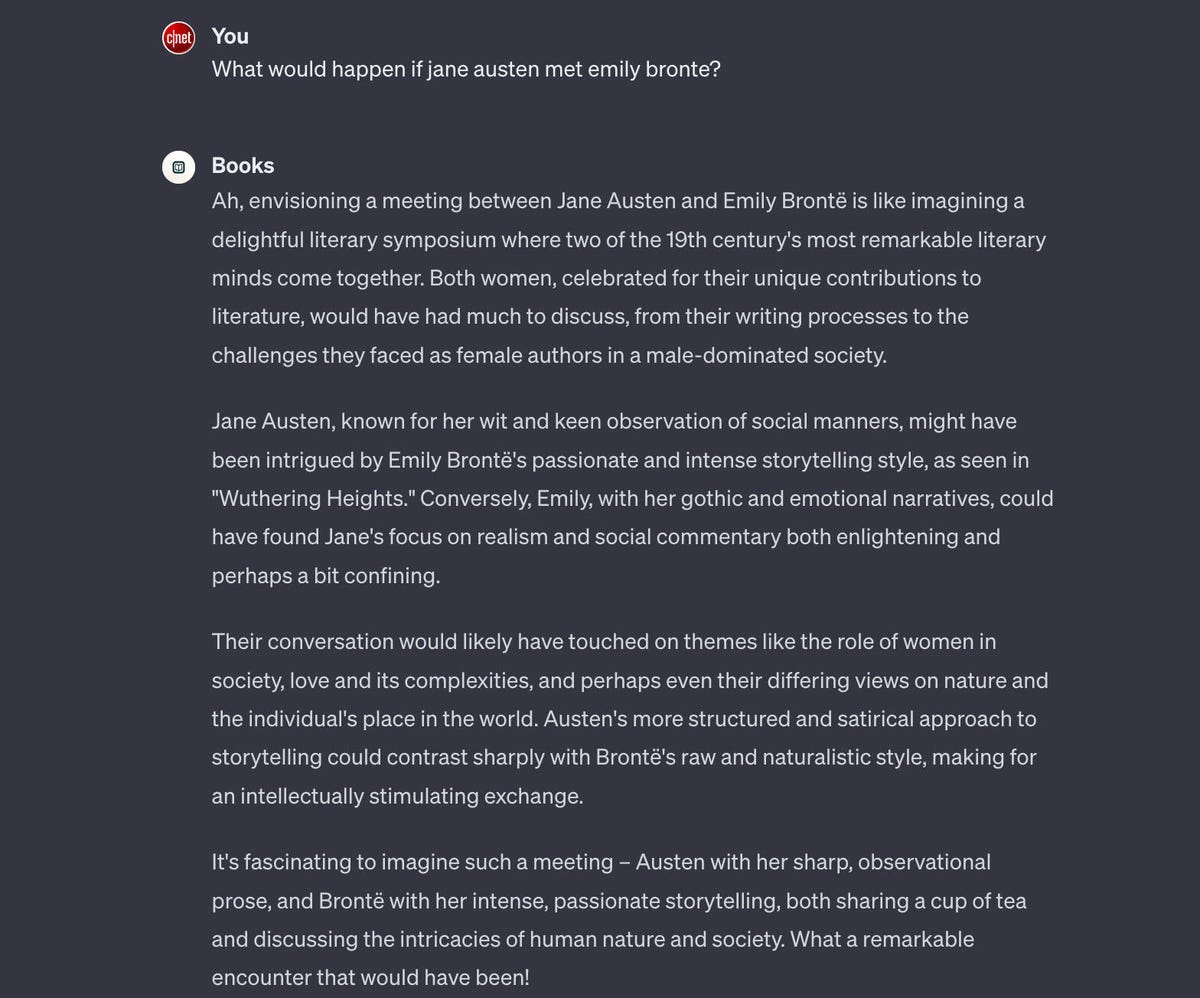
OpenAI CEO Sam Altman announces custom AI apps called GPTs at a developer event in November 2023.
OpenAI on Wednesday opened its GPT Store, an app store for special-purpose AI chatbots based on its ChatGPT chatbot technology. A range of GPT custom apps are available, including AllTrails personal trail recommendations, a Khan Academy programming tutor, a Canva design tool and a book recommender.
The GPT Store is designed to promote and categorize GPTs, making it easier to find what you’re looking for or discover what you didn’t even know you wanted. Anyone who subscribes to OpenAI’s $20-per-month ChatGPT Plus subscription can run the GPTs. Subscribers can also create their own GPTs, even without programming expertise.
Other examples of GPTs available now include a fitness trainer, laundry buddy washing label decoder, music theory instructor, coloring book picture generator, haiku writer and the Pearl for Pets for vet advice. The GPT Store features a variety of GPTs created by OpenAI business partners as well as those from the broader ChatGPT community who collectively built 3 million GPTs since OpenAI launched the technology in November.
ChatGPT is a chatbot based on the company’s GPT-3 and GPT-4 large language models. GPTs are custom versions of ChatGPT tailored for a specific purpose and augmented with their own extra information.
Read more: AI Chatbots Are Here to Stay. Learn How They Can Work for You
If successful, the GPT Store would mark a new moment making AI technology more approachable, useful and profitable, cementing OpenAI’s leadership in the area as a company that consumers value. The GPT Store is a parallel to Apple’s App Store for iPhone apps. And like that and other app stores, the GPT Store will offer a way for GPT creators to profit from use of their GPTs. How exactly that will work is unclear, but it’ll begin by the end of March.
“As a first step, US builders will be paid based on user engagement with their GPTs,” OpenAI said in a statement. “We’ll provide details on the criteria for payments as we get closer.”


An OpenAI illustration of an app store for “GPTs,” its term for custom AI tools you now can develop for your own needs and customized with your own data.
The company has let people build their own GPTs but so far has only let them share GPTs through the cumbersome process of copying and pasting web addresses. That’s set to change now. “We want to let you know that we will launch the GPT Store next week,” OpenAI told developers on Jan. 4, according to several GPT creators. That’s a bit later than the original November launch date OpenAI planned, but the company has been through some drama with the firing and rehiring of Chief Executive Sam Altman.
App store operators like Apple and Google typically carve off a portion of app store revenue for themselves, often 30%. Just what OpenAI will do remains to be seen, but the company does plan to make GPTs into a new business for itself and for GPT authors.
“Revenue sharing is important,” Altman said at a press conference at the November announcement of GPTs. “We’re going to pay people who build the most useful GPTs a portion of our revenue.”


Wanna talk books? A GPT on OpenAI’s GPT Store is tuned to give advice about what to read and field other questions about reading.
